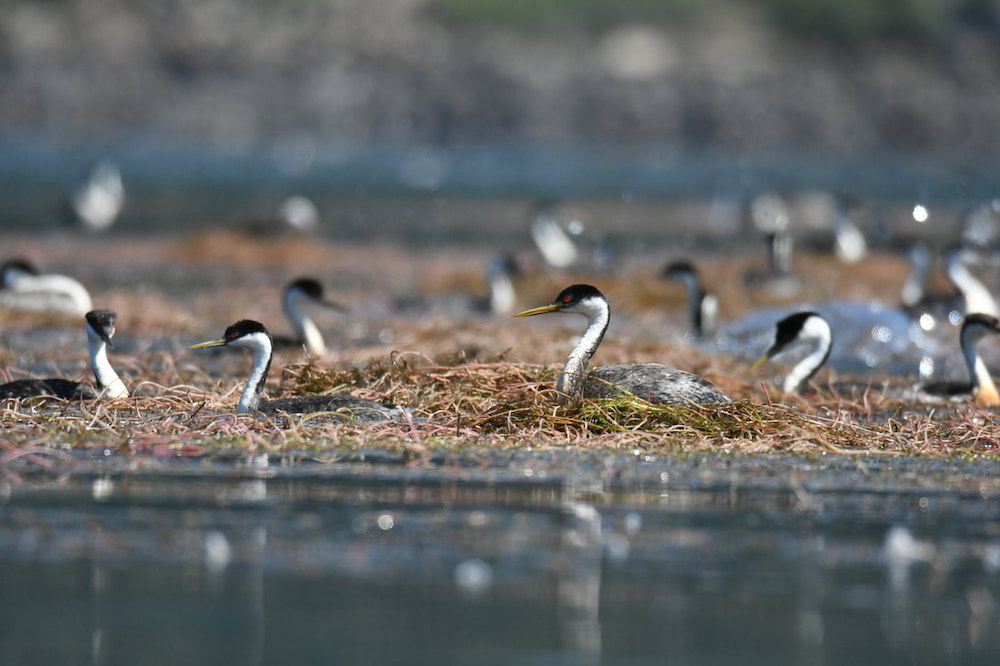There is, apparently, a lot to be said for having a time of rest: trees drop their leaves and go dormant; fungi retreat underground; insects wrap in cocoons, and chipmunks hibernate; lizards and turtles brumate – the reptilian version of hibernating; we humans developed a Sabbath, and weekends.
Birds, however, are largely committed to being lightweight and active. Hibernation and weekends are not options for them. Some smaller birds and nightjars can lower their metabolism to sleep through a cold night or even longer harsh conditions, but mostly birds survive tough weather by either migrating away or foraging voraciously.
Eared grebes, however, have found another way to amplify the benefits of rest.
Out on our lakes and rivers, they are in their resting mode right now. As many birds do, they have toned down their social demands, dropping their extravagant yellow plumes of breeding plumage–their “ears”–and the showy dances that go with them. They wear plain black and white now. They are not singing, and scarcely even talking, spending their time in loose solitude. Most stunningly, they cannot even fly.
For 9-10 months of the year, eared grebes don’t need to take wing. They need to feed–for themselves in winter, for their young in the spring. So they give up flying for extended periods of the year. Their flight muscles shrink, and their digestive organs grow. They eat and they rest. The invertebrates of open water in places like Turtle Bay and along Park Marina become their meals and muscle. The water itself is their home and refuge. The birds don’t hibernate, but they eat and store their calories with high efficiency.
Spring will call soon. Then the eared grebes’ pectoral flight muscles will grow, and the winter’s rest and food storage will power their flights. First they will wing their way to either Mono Lake on the east side of the Sierras or the Great Salt Lake in Utah. Those two lakes act as a staging ground for 99% of all the eared grebes in North America. They are rich in brine shrimp, and the grebes feed voluminously. The more shrimp they swallow, the greater their reproductive success.
Well fed, the grebe flight muscles again develop and they fan northward to nest in freshwater and saline lakes from northern California up through central Alberta and Saskatchewan. There they will court with elaborate dances on the water.
Well built for swimming, with their feet located back toward their tails, grebes are awkward, essentially crippled, on land. Following their successful aquatic-dance courtships, they will build floating nests in cattails or similar vegetation. Depending in part on the density of brine shrimp in their staging ground lake, the grebes will raise one to eight chicks.
The chicks are quickly active, diving and hiding just an hour after hatching. But they are also not above taking warm rides on their parents’ backs. Eared grebe parents will join with neighboring nesters to share their parental duties.
As summer progresses the young will be increasingly on their own. By September they will have developed the strength to fly to one of the great saline lakes of the American west, where they can continue the cycle of losing their flight muscles, and feeding and resting.



